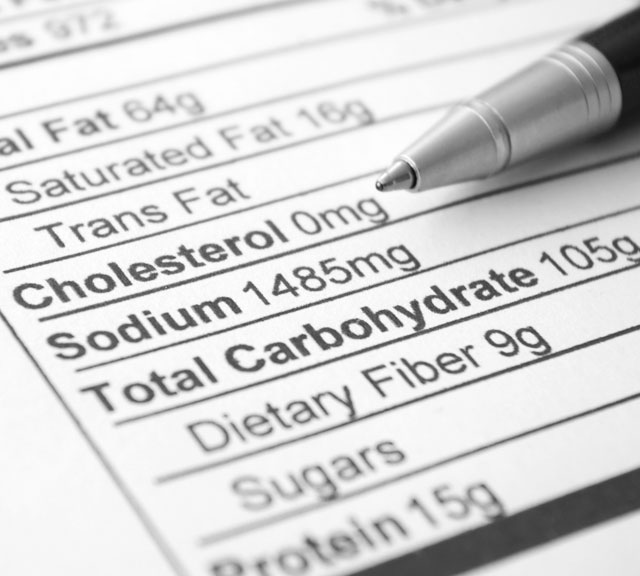7 Ways to Eat Smart with Diabetes

Find Your Perfect Match
Answer a few questions and we'll provide you with a list of primary care providers that best fit your needs.
Eating the right foods when you have diabetes isn’t always easy. Food labels can be confusing, restaurants and grocery stores offer lots of temptations, and a busy schedule often drives you to choose what’s easy versus what’s healthy.
Whether you’ve had diabetes for a little while or a long time, there are some basic steps you can take to make smart food choices to manage your diabetes.
Premier Health Diabetes Nutrition Educator Cindy Santoro, RDLD, likes to focus on the positive, emphasizing all the things you can eat if you have diabetes. “I try not to label foods good or bad, and I don’t like to tell people they can’t have something, because that makes them want it more,” she says.
She notes that a diet low in carbohydrates and high in fiber is healthy for the entire family, so there’s no need to prepare separate meals. In addition, “there’s always a way to work in something you love.”
Along with exercise and medication, diet is a cornerstone of taking good care of yourself when you have diabetes. Follow these seven tips Santoro offers on eating well with diabetes:
1) Eat a Variety of Foods and Focus on “Super Foods”
These are rich in nutrients and fiber, and generally low in calories and carbohydrates:
- Beans, which provide protein, fiber, magnesium and potassium
- Dark, green, leafy vegetables (spinach, collards, kale) in unlimited quantities, with multiple vitamins and minerals, protein and fiber
- Citrus fruit, with vitamin C and soluble fiber, including grapefruit, oranges, lemons and limes
- Sweet potatoes, full of vitamin A and fiber
- Berries, packed with antioxidants, vitamins and fiber
- Tomatoes, with vitamins C and E, plus iron
- Fish high in omega-3 fatty acids, including salmon
- Whole grains, full of magnesium, chromium, omega-3 fatty acids and folate
- Nuts (but only an ounce, to keep calories down), containing lots of fiber and magnesium — plus, they’re good for hunger management
- Fat-free milk and yogurt, packed with calcium and often fortified with vitamin D
2) Measure Your Portions
The amount you eat is critical to managing your overall blood sugar. Ideally, you’ll want to use a measuring cup or a kitchen scale. If you need to eyeball it, a meat portion is about the size of your palm or a computer mouse. A golf ball is about one ounce of food; your fist is roughly one cup.
3) Budget Your Carbs
Carbohydrates give you energy, but they also raise your blood sugar higher and faster than other kinds of food. “You really can enjoy a meal without having your blood sugar go out of control, even on Thanksgiving,” Santoro says. “Save the carbs for the things you really want.”
“I try not to label foods good or bad, and I don’t like to tell people they can’t have something, because that makes them want it more.”
Some simple substitutions to reduce carbs in your diet and manage your blood sugar include:
- Use oil for cooking vs. shortening or stick butter.
- Choose whole wheat spaghetti vs. regular spaghetti.
- Select fresh, lean meat vs. processed meat.
- Use low-fat dairy vs. whole-milk products.
- Choose fruit vs. fruit juice.
- Drink diet soda vs. regular soda.
4) Choose Wisely at Restaurants
When dining out, choose meats that are baked, broiled or grilled (not fried). Ask for sauces and salad dressing on the side. Request a to-go box up front, and when your meal comes, put half of it in the container for another meal. You also can ask for a child’s portion to help you limit food quantity. Avoid free dessert nights, big buffets and breakfast bars. If you go to a salad bar, select items that grow in the garden. Just say no if a waiter offers a free bread basket, chips or crackers.
5) Control Impulse Buying at the Grocery Store
It’s best not to shop when you’re hungry, Santoro says. Avoid the cookie and chip aisles. If you stick to the outer edges of the store, you’ll find mostly fresh veggies and meats. Avoid buying meals in a bag, although it’s fine to purchase some frozen items that cater to healthy eating.
6) Limit Sweets
When it comes to controlling how many sweets you eat, Santoro offers a few guidelines:
- Ask for extra spoons and forks, and split your dessert with others.
- Eat sweets that are sugar-free.
- Always ask for the smallest serving size or children's size.
7) Plan Ahead
If you know you’re going to be out for several hours, pack your snacks, lunch or dinner. Resist the urge to stop at a fast food place because it’s convenient. “The biggest hurdles people have with food are budgeting time and money,” Santoro says. “If you look for specials on fruit and meat, it’s affordable to eat fresh foods.” See a diabetes educator or attend meal planning classes if you want more guidance about the foods you eat.
Find Your Perfect Match
Answer a few questions and we'll provide you with a list of primary care providers that best fit your needs.
Source: Cindy Santoro, RDLD, Premier Diabetes Nutrition Educator, Medline Plus, American Diabetes Association





